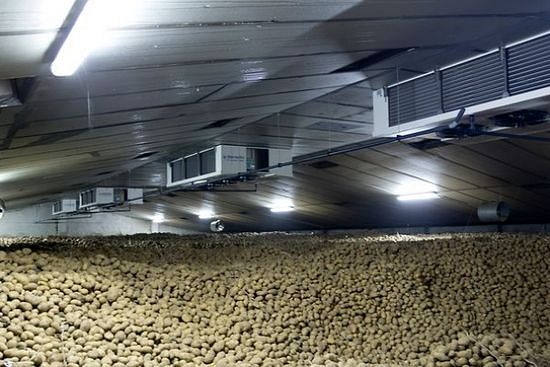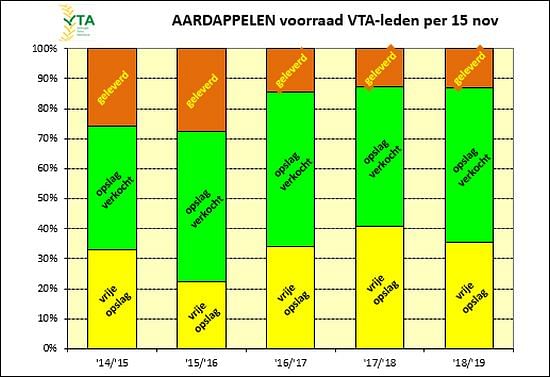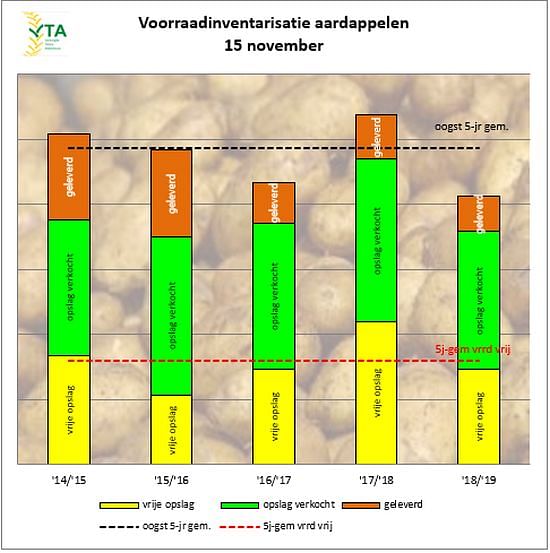The hot and dry weather in large parts of Europe have led to a drastic reduction of yield and a much smaller tuber size. This will affect the typical length of the french fries on your plate (Courtesy: AgroDay)
Potatoes in Europe: New data from the United Kingdom, The Netherlands and Spain

That the potato harvest this year in Europe was well below average due to extreme weather conditions is well known by now. I this article we present some recent data from Great Britain, The Netherlands and Spain that further clarify the situation.
GB potato production lowest since 2012

The first provisional estimate of total potato production in Great Britain for the 2018 crop is 4,887Kt. This is a 1,156Kt drop from last season and 13% below the five year average (2013-2017, 5,619Kt).
Production is the lowest since 2012, a year also categorised by extremely difficult growing conditions and is only the fourth year that production has dipped below 5Mt since 1960.
The 2018 estimated average net yield for GB is 41.7t/ha, down 7.6t/ha from last season and 12% below average (2013-2017, 47.4t/ha).
A combination of late planting and the prolonged hot and dry weather stalling tuber growth earlier in the season has largely impacted yields.

Potato production and yield in Great Britain in 2018 in comparison to previous years (Courtesy: AHDB)
Production of potatoes destined for known market sectors declined this season. For sectors where the expected market sector was not known (other ware), production demonstrated a slight increase.
The largest absolute fall in production was from the prepack sector, which fell 458Kt on the year, to 1,882Kt. The decline in available prepack supplies may be partially mitigated by the fact that packhouses were able to utilise price competitive old crop supplies well into September. The usage of the larger than average carryover from last season will have helped reduced some pressure on new crop supplies and has the potential to shorten the season by at least three weeks.
Production for the fresh chipping and processing markets decreased significantly from last season, to 461Kt and 1,574Kt respectively. However, widespread secondary growth has resulted in variable frying performance and will likely lower the proportion of the crop that meets the desired specification.
Seed production this season fell to 563Kt, a 10% reduction on the year. It is unknown what the full impact of conditions this season will have had on the crop, but the likelihood is that widespread quality issues will reduce the proportion of seed meeting certification specification, including size. This could further tighten the seed availability, with reports of increased seed prices already coming forward, driven by restricted supplies both domestically and on the continent.
Regional differences: Scotland did well
In general, yields across Great Britain varied significantly dependent on availability of irrigation and soil type. Despite this, some overarching trends can be seen and distinctive regional splits have emerged.
However, of note is the difference recorded for Scottish production; the drought having significantly less impact on crops north of the border than for the remainder of Great Britain. Scottish production dropped to 11,200Kt, due to a reduction in area, with crops escaping much of the impact of the drought. Yields in Scotland were above average at 49.2t/ha, a 3% increase from 2017.
Meanwhile, average English yields this season fell to 40.1t/ha, with large falls in production recorded in most regions. The Eastern counties appear to have been particularly affected, with yields down 18% from 2017, at 40.4t/ha.
Conclusion
The reduced production this year could continue to lend support to prices as the season progresses, though the extent of this remains to be seen. While the total production figure sits at 4,887Kt, persistent quality issues this season means that the proportion of production which is usable for its intended purpose is likely to be a fair amount lower.
In addition, anecdotal reports of growers moving a larger than normal proportion of supplies earlier in the season, due to concerns around storability, may mean that the rate of drawdown in stocks diverge from normal trends. The storage survey, which provides data on quantity of crops held in grower stores at the end of November, will shed light on the tightness of supply moving into the New Year.
However, Dr Rob Clayton, Sector Strategy Director of AHDB Potatoes, had this to say on the impact of this season on consumers:
“It is important to remember we won’t run out of potatoes. We didn’t in 2012, and we won’t in 2018.”Source: AHDB Potatoes
“But what consumers will notice is a wider range of shapes and sizes in the bag they bring home to cook with.”
VTA: Potatoes in Store in the Netherlands

In The Netherlands, the association of farmers for arable crops (Verenigde Telers Akkerbouw; VTA) annually holds a survey among a group of its potato farming members to establish the amount of potatoes they hold in stock by November 15 .
The results confirm that the harvest of 2018/2019 was the lowest in many years.
Statistics Netherlands (Centraal Bureau voor de Statistiek; CBS) reports that the acreage used for cultivation of potatoes (excluding seed potatoes and potatoes used for starch production) increased by about 0.1 percent. However, as a result of the drought of last summer, potato production is the lowest in years.

Much less potatoes in store in the Netherlands
The lower yield per hectare combined with the small increase in acreage compared to last year, resulted in a potato harvest that was 23 percent below last year and 15.1 percent below the 5-year average.
Few potatoes delivered to the buyer / potato processing industry
By November 15, 13.1 percent of the crop was delivered to the processor. The 5-year average for the amount delivered by this date is 21.6 percent.

Percentage op the potato crop delivered, in store and sold and in store unsold. For legend, see next graph. (Courtesy: VTA Nederland)

The absolute amounts of potatoes in storage at VTA Survey participants. (Courtesy: VTA Nederland)
Bars: Red='Delivered' Green='In Store, Sold' Yellow='In Store, Not Sold'
Dotted lines: 5-year averages Black='Harvested' Red='Not sold at this time'
Potato Production in Spain 15 to 20% lower

While most of the media attention focused on the potato production problems in North-western Europe, the potato season in Spain did not go much better.
The head of the FEPEX potato committee, Jose Ramón Aguado, reported that this year's Spanish potato season will come to an end with a 15 to 20% lower yield than in 2017.
According to Aguado, the decline in the Spanish production is mainly due to the weather conditions. The spring was too wet, which took a negative toll during the planting.
Moreover, the summer was marked by a lot of temperature fluctuations, so the potato plants did not develop well.
According to the Spanish Ministry of Agriculture, 67.810 hectares of potatoes were planted this year; 4.3% less than in 2017. When it comes to potato production, the most important regions are Castile-Leon, with about 19,351 hectares; Galicia, with 17.221 hectares, and Andalusia, with 10.542 hectares.
The Ministry reported a potato harvest volume of 1.978.000 tons, divided into 92.000 tons of extra early potatoes, 372.000 tons of early potatoes, 832.000 tons of mid-season potatoes and 691.000 tons of late potatoes.










